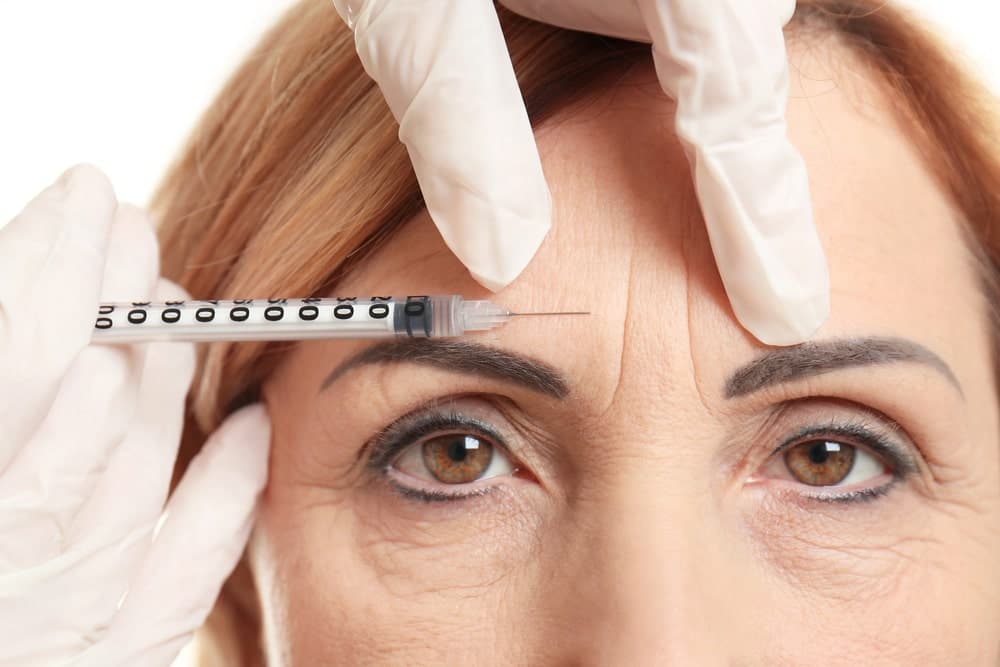
FDA-approved Botox Treatments for the Forehead
Botox is one of the most versatile medical treatments in the world. It is a cost-effective procedure for a variety of health conditions and cosmetic improvements. Unfortunately, many people erroneously believe that a Botox patient is injecting a live toxin into their facial muscles, which is not entirely true. Although Botox originates from the bacterium Clostridium botulinum, it is an isolated and safe strain of the toxin that is FDA-approved for a multitude of procedures and conditions. People often get Botox injections to reduce the appearance of fine lines and wrinkles, or to alleviate the pain associated with chronic migraine headaches. So, why would someone get Botox injected into their forehead? It turns out, for a couple of significant things.
More than 38 million people in the U.S. suffer from migraines, with an estimated two to three million people afflicted with chronic migraines. Migraines are excruciating, unpredictable, and extremely disruptive to daily functioning. There are a few ways to treat migraine headaches effectively, but Botox is one of them. In 2010, the FDA approved Botox injections for the prevention of chronic migraines in adults. Chronic migraine is when a person suffers from migraines for at least 15 days per month. In addition to the forehead, Botox can also be injected into the neck, sides of the face, and shoulders for prevention of chronic migraines.
Recently, Botox was also officially approved by the FDA for treating forehead wrinkles and fine lines in the fall of 2017. Botox can be injected into horizontal forehead lines, vertical lines between the eyebrows, or crow’s feet around the eyes. Even though the treatment is FDA approved, patients must be careful to choose a highly qualified and experienced plastic and reconstructive surgeon for forehead injections. Too many units of Botox or a too high of an injection dose can cause drooping and sagging of the eyebrows, or uneven eyebrows.
There are several strains of the toxin Clostridium botulinum. But injectables like Botox only use the first two strains of the bacteria. Contrary to popular belief, Botox does not get rid of wrinkles. Instead, the material is injected into the muscle beneath the wrinkles, and Botox effectively paralyzes the muscles and smooths the wrinkles or fine lines. It does not eliminate the wrinkles permanently.
For the treatment of chronic migraines, Botox is thought to target specific pain receptors in the muscles, decreases inflammation and pain signals to the brain. The medication deactivates the pain receptors and blocks the neural pathways associated with sending these pain signals.
Typically, Botox will last about 120 days. Around 120 days after Botox is injected, the nerve endings that are blocked by the Botox will regenerate and reactivate. Patients will notice a return in the appearance of wrinkles, or migraines will start again if they do not continue with subsequent Botox injections or maintenance treatment. For most patients, they will need to get new injections of Botox about every three to six months. Patients who get Botox to reduce the appearance of forehead wrinkles and fine lines will often see a reduction in the presence of wrinkles even after the medicine wears off. Botox will, over time, shrink the muscle and reduce the overall appearance of forehead wrinkles.
When it comes to reducing the appearance of wrinkles in the forehead, Botox is most useful for lines that appear when a person frowns, smiles, or squints. Creases that are deeper and remain when a person’s face is resting will not disappear after an injection. However, Botox is highly effective for softening these more permanent lines.
The most common side effects for Botox injections is bruising, swelling, or pain at the injection site, and mild headache. Patients can minimize side effects with a topical anesthetic or by icing the injection site before the procedure. Also, patients should avoid anticoagulant medications for about two weeks before an injection. This will minimize bruising. Any bruising or swelling will clear within a week after the procedure, and headaches typically last for a day after a Botox injection. Patients will first notice a change in appearance within 48 hours after injection. Within five to ten days, the effects will be the most notable and should last for at least three months. For migraine sufferers, the FDA recommends that they get routine injections every three months.
More than 6 million people get Botox injections every year. The FDA has approved cosmetic Botox injections for people ages 18 and older. For patients with conditions like strabismus, children as young as 12 can get Botox. For cosmetic procedures, Botox is highly effective for people in their late twenties and early thirties when they first start noticing fine lines and wrinkles forming. Botox is useful for giving patients a refreshed and rejuvenated appearance if a skilled and licensed practitioner performs the procedure.
A board-certified plastic surgeon is the best doctor to inject Botox. They will be the most experienced and most skilled at the procedure, although other doctors, nurses, physicians assistants, and nurse practitioners with the appropriate training can also perform Botox injections. An experienced plastic surgeon will know where and how to inject the Botox to minimize swelling, bruising, and drooping of the eyelids. Plastic surgeons also know how to give patients a natural look, so the patient doesn’t look “frozen” and their face stiff and unnatural.
The skilled, board-certified plastic surgeon Doctor Binder has helped hundreds of patients prevent painful chronic migraines and premature aging with highly effective Botox injections. Find out if Botox is right for you by contacting the office of Doctor Binder today. Representatives are standing by to answer any questions you may have about Botox injections for the forehead.
